How to Write Effective Re-Engagement Emails
1. Find out the reasons for lack of engagement
2. Segment inactive subscribers
3. Ask subscribers for feedback
4. Personalize beyond using a first name
5. Show subscribers they’re missing out
6. Lure them with a gift or an offer
7. Send a series of emails
8. Use gamification
9. Engage with humor
10. Testing
If you have an email list, you find over time that some subscribers go dormant. They may be ignoring your emails altogether or not clicking through.
The good news is that it does not necessarily mean you have lost them altogether. It is easier and cheaper to try and reach out to dormant subscribers with effective email marketing than to find new ones.
If you can understand the reason why they’ve gone dormant, you can use customized re-engagement emails to win them back. Here are some ways to write effective re-engagement emails.
Find out the reasons for lack of engagement
Marketing Sherpa reports that, on average, marketers lose 25% of their email list every year. There are multiple reasons for disengagement. For instance, subscribers may no longer use an email address, or worse, they may no longer find your emails useful.
Some of the top reasons for unsubscribing from an email list include getting too many emails in general and receiving emails that aren’t relevant.
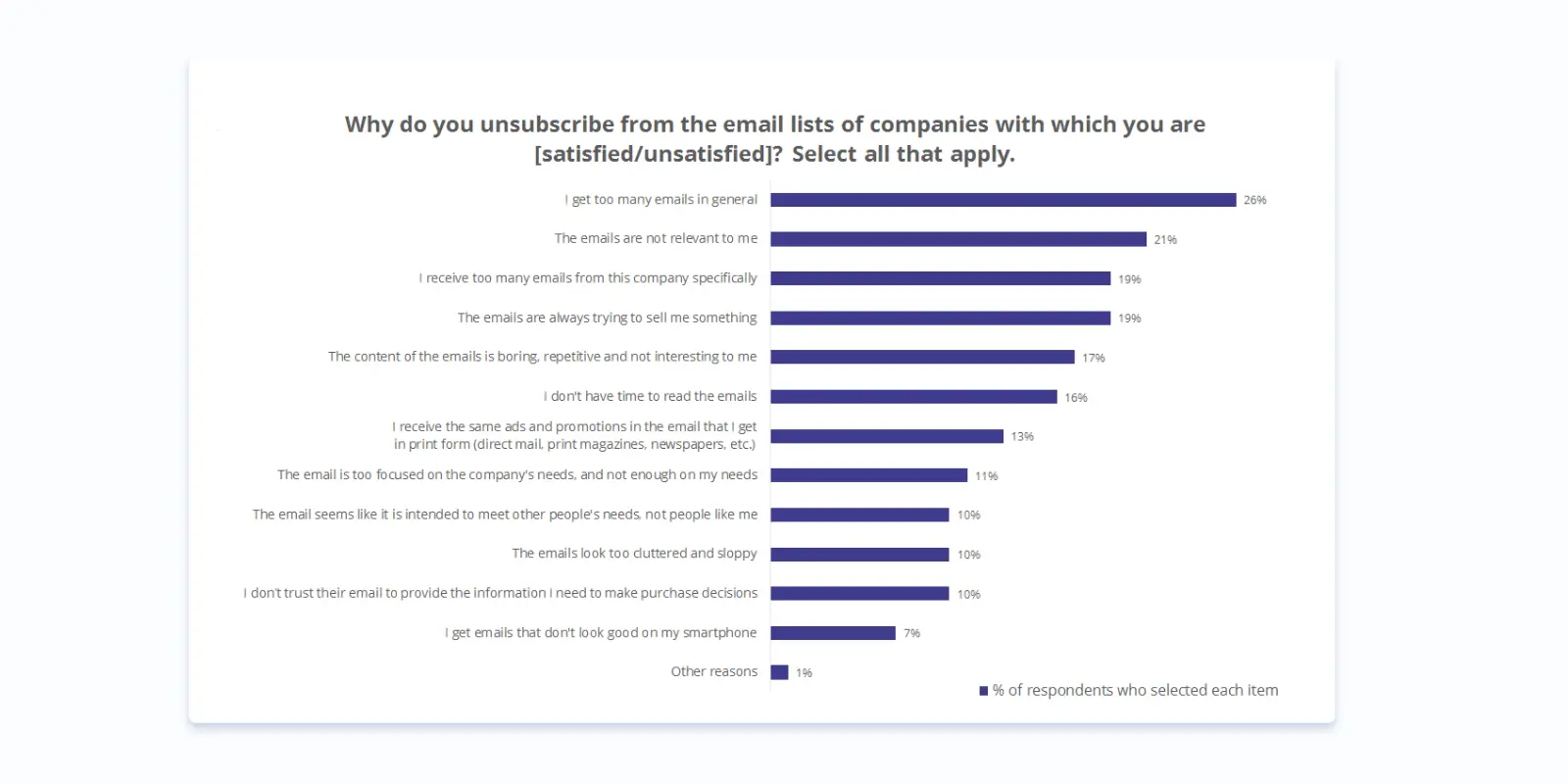
How do you figure out why your subscribers are inactive? You have to look for clues. For instance, someone who subscribed to get a free ebook might disengage after receiving it. Abandoned shopping carts are another clue. A subscriber may have had a problem with your check-out process or prices.
Segment inactive subscribers
One of the best practices that can re-establish the connection between you and the subscribers is analyzing your customer demographics. Perhaps you haven’t met the needs of a certain segment of your list. If you see that a number of people of the same age are unsubscribing, this could be the problem.
It helps to segment your inactive subscribers according to the length of time they’ve been disengaged, as well as their reason for disengagement.
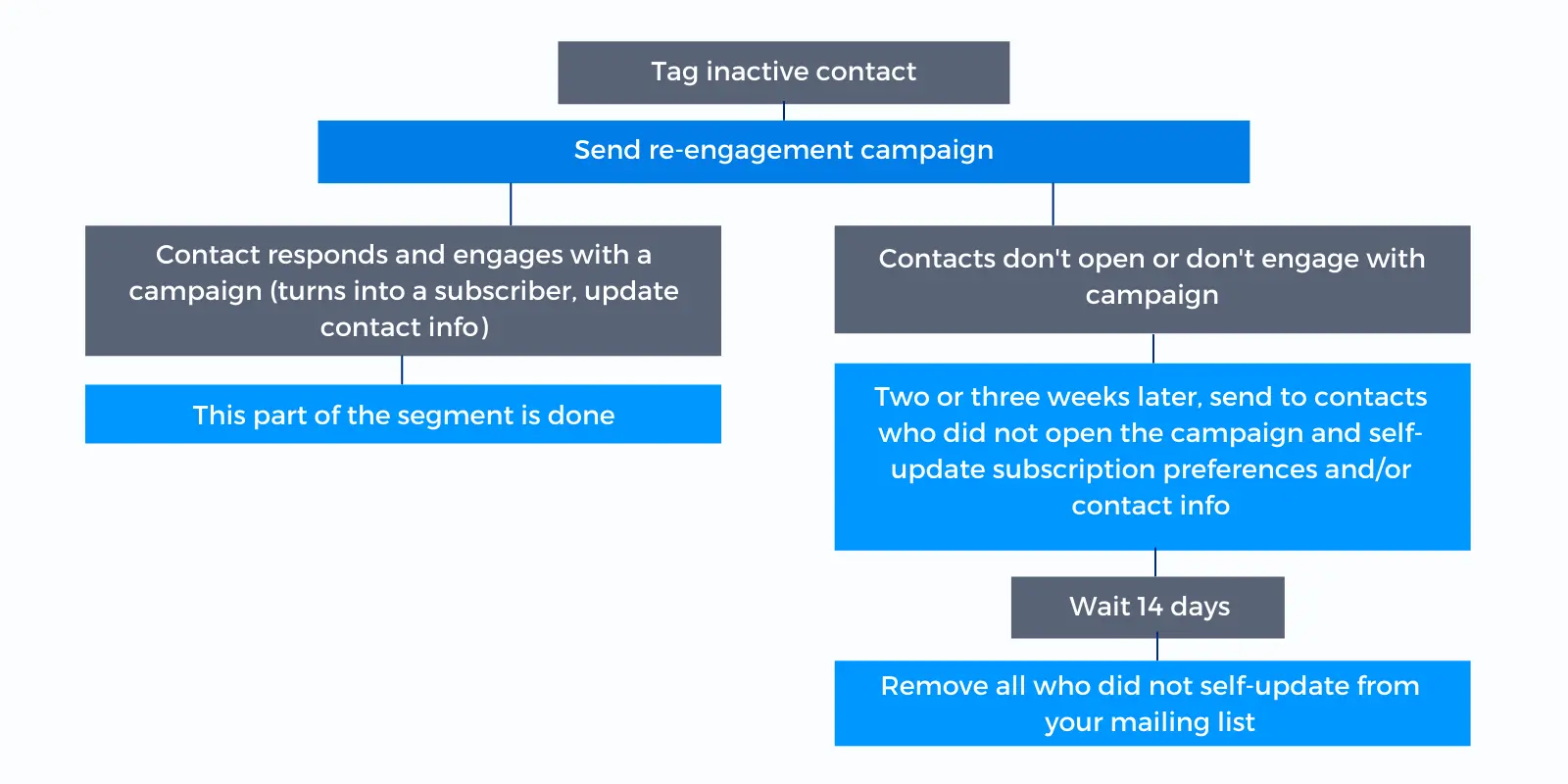
source: Strategies&voices
Keep in mind that some of your customers may still be subscribed, but they ignore your products and make no purchases whatsoever. Perhaps they lost interest in your services because you stopped offering something they have come for in the first place. Or they have found a solid alternative, and your products do not seem like a viable option anymore.
Whatever the reason, such kinds of subscribers are, to some extent, inactive as well. How can you reinforce their interest in this case? The same thing that you would do to reconnect with those who already unsubscribed – conduct a re-engagement campaign.
Ask subscribers for feedback
Of course, you can simply ask for feedback from subscribers. Asking them the reason for their inactivity and trying to figure out what could persuade them to re-engage is one of the best practices in email marketing. It can help you win back your subscribers.
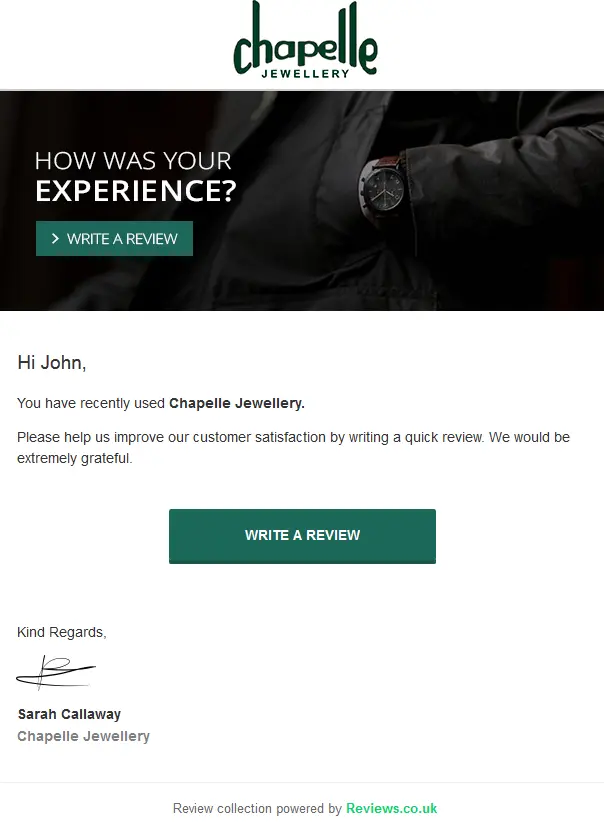
source: reviews.io
A re-engagement email from Mini does this in a humorous way, giving various questions followed by solutions. The first one they ask is “Are you out there?” with a request to send smoke signals or wave your arms to let them know you’re okay.
They ask, “Are you ignoring us?”, “Are you in jail?” etc. with entertaining answers and provide subscribers with an opportunity to re-engage.
If you don’t feel you can pull off an entertaining email like Mini’s, go for a simple, direct approach. Ask a simple question: “Do you still want to hear from us?” Use a prominent CTA button asking subscribers to update their email preferences.
After you have gathered and analyzed the required feedback, you should start developing a future plan. Losing some of your subscribers, even the most enthusiastic ones, seems inevitable. Nevertheless, you should not give up on them.
Personalize beyond using a first name
Personalized emails will improve your chances of inducing engagement, but this has to go beyond just using the first name. You can’t just send your email subscribers a slightly different version of emails you send active subscribers.
It starts with your subject line. Purely based on the subject line, many recipients mark an email as spam. Try to aim for a subject line that sounds like one friend talking to another. Some re-engagement email examples could be:
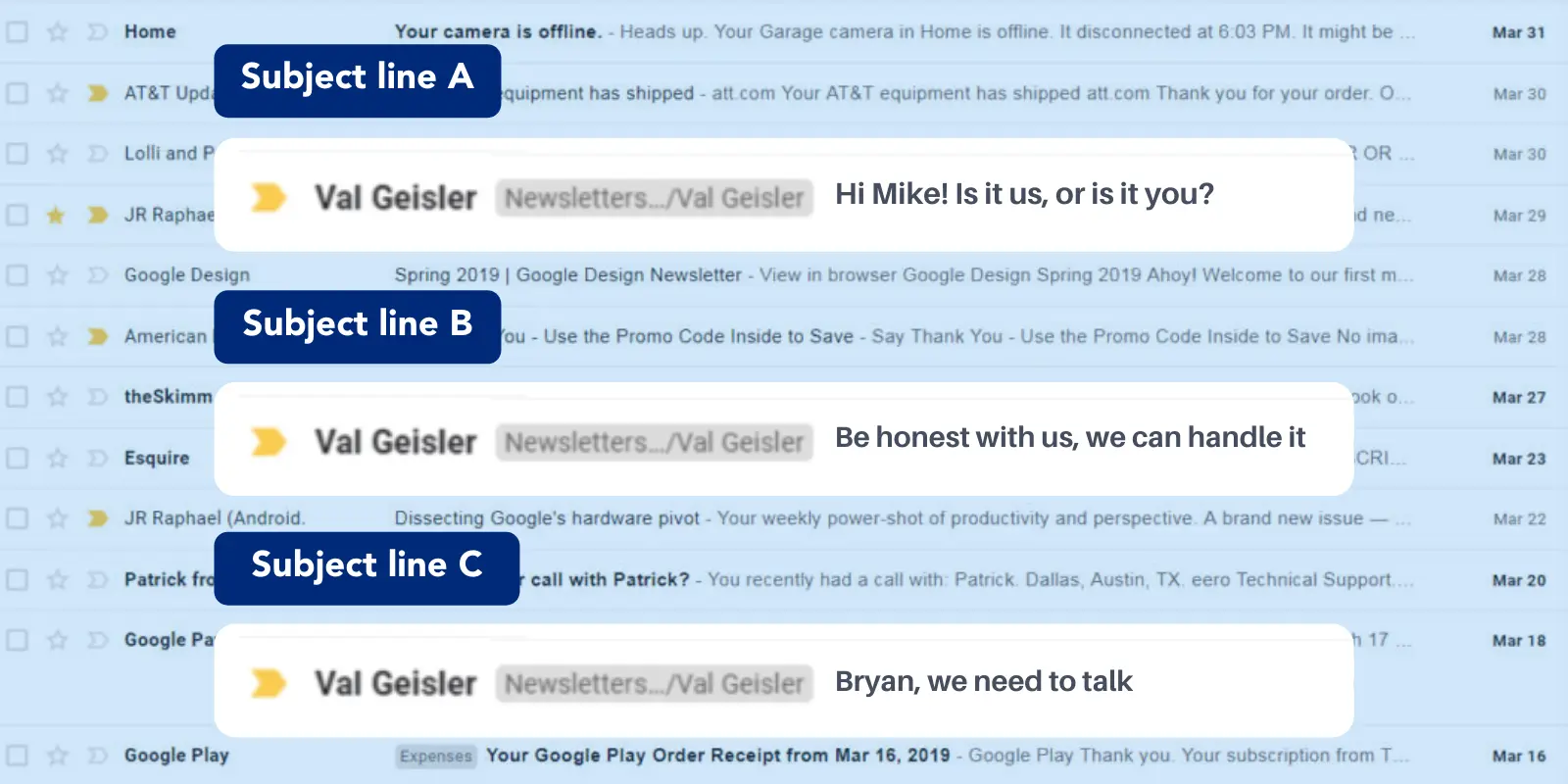
Make sure to maintain a friendly or witty tone while trying to reconnect with your subscribers. It is crucial that your inactive, as well as the active audience, has positive associations with your company or brand.
Earbits’ re-engagement campaigns include first-name personalization, but they go beyond and even include an interactive media element in their customized messages.
The re-engagement email reads, “Hi Steven, Three weeks ago, I thought you and I had something going on. You came to visit me, and I played some songs for you. But now, I haven’t seen you in a while, and the heartbreak is tough. So, I made you this one-song mixtape …. I know you wanted me to be a good listener, but I really think that’s your role in this relationship. Please come back … I’ll do you right this time.”
Show subscribers they’re missing out
Remind your customers about the value of your products or services with a clever re-engagement email. You refresh their memory by restating the issue you once helped them solve. Similarly, you could show them the company’s new products that might interest them.
Show them what they’re missing out on since they last engaged or bought a product from your brand. Some of your subscribers probably need just a little extra incentive or a push in the right direction. Here are some re-engagement email examples that could help you achieve this:
Coffee Meets Bagel is an online dating site that uses clever emails to reconnect with inactive subscribers. The re-engagement email says, “Danielle, your bagels are waiting. Come back! You have bagels who liked you and are waiting for your response. Reactivating her account will give her a chance to check out the bagels.
SurfStitch’s re-engagement email features new products, new brands, and more. They include a provision for subscribers to adjust email frequency and remind them of what they get for free, such as free express delivery.
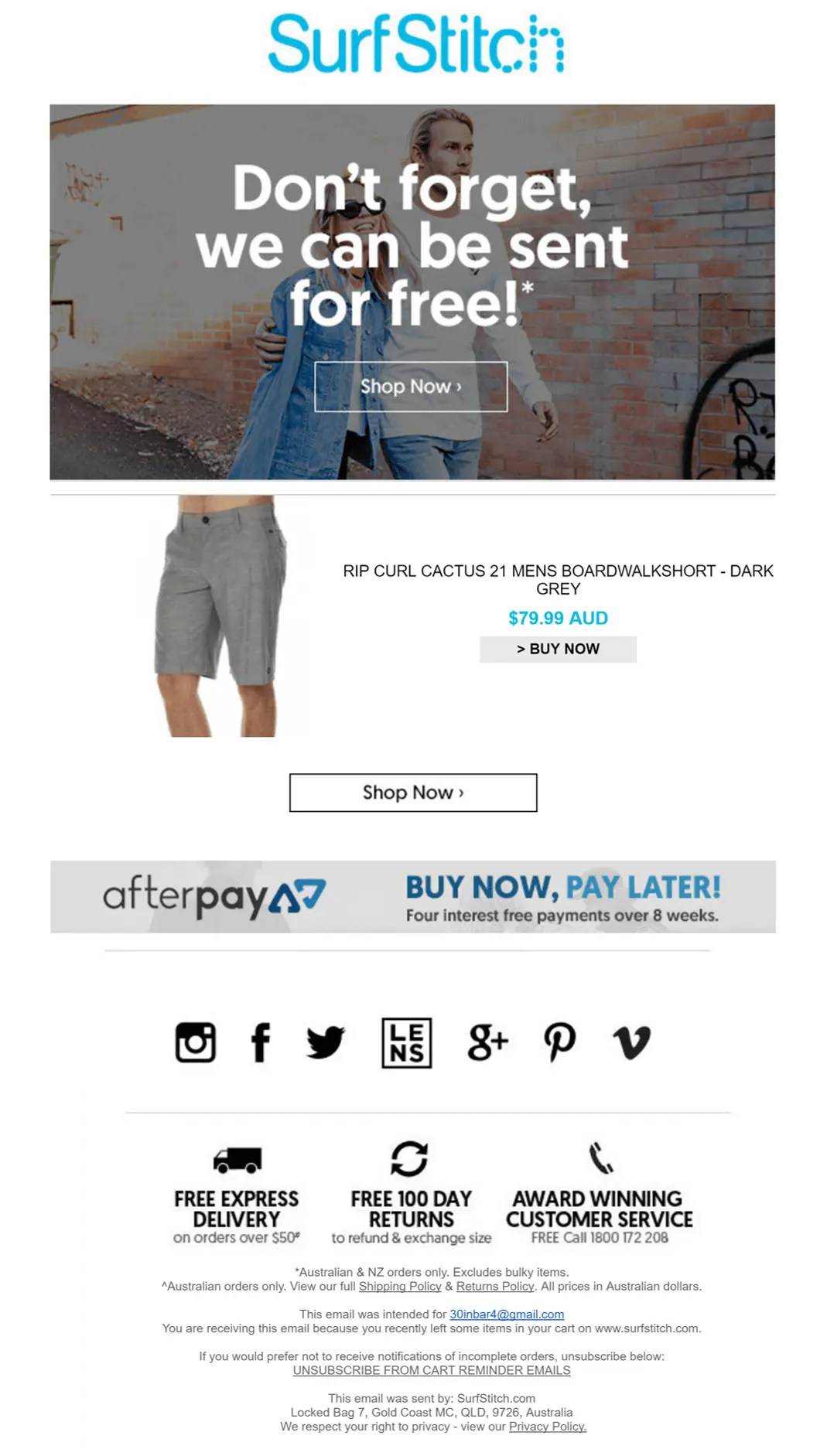
Skillshare focuses on new features and benefits, enticing subscribers to visit the website and try them out. They also throw in a discount on their premium plan for the first month.
Lure them with a gift or an offer
Gifts, offers, or discounts are great ways to win back your subscribers. Mentioning an offer in the subject line of the email may encourage them to visit your store again. Highlight the offer in the copy and follow with a clear CTA.
BirchBox provides subscribers with two interesting options in an attempt to re-engage with them. They can pick from two Rifle Co. boxes - a box of five surprise samples personalized to their beauty profile or a box of five editor-selected samples.
Pinkberry’s re-engagement email simply says “We miss you” and adds a free yogurt to the subscriber’s Pinkcard.
Giveaways do not necessarily engage customers over the long term. Only you can do this by continuously creating good and meaningful experiences for them.
Crocs use the simple but effective copy in their email campaign to re-establish contact with inactive subscribers. They offer an incentive of $10 off the next purchase of $50, but they also manage to humanize the brand and even sneak a message in at the bottom about their shoe donations through Croc Cares.
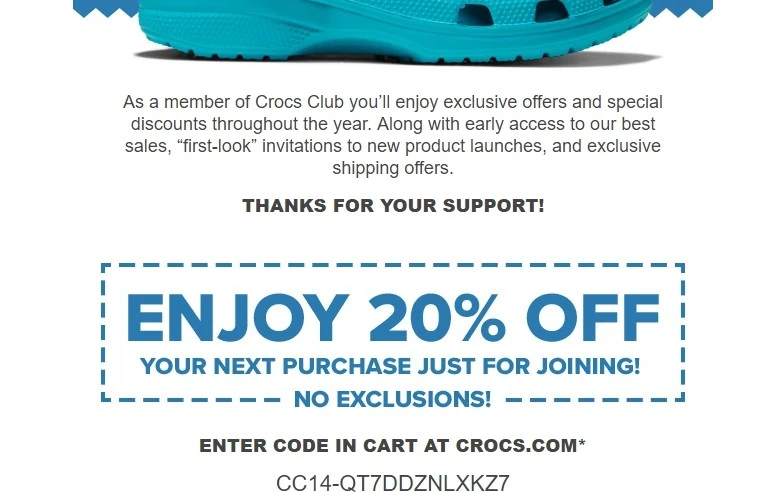
source: Truth in advertising
Send a series of emails
Sometimes persistence pays off. Try out different combinations of best re-engagement subject lines, email copy, offers, etc. Do not just give up after one unsuccessful email. Sometimes it requires a little more interaction. Send out about three emails that are relevant, well-written, and informative. If you don't get results, it's time to let go. If you keep sending emails after this point, you're likely to give your company a bad reputation.
The following resources can help you make your email campaign more enticing and professional-looking. Mix visuals and text, make copy simple but memorable, offer the opportunity to share, and achieve consistency in email signatures. To achieve the maximum open rate and the final conversion rate, use these tools.
- Venngage will help you create infographics, collages, and other visual content.
- Use writing help or custom writing services to create your email series.
- The Click to Tweet tool makes it easy for customers to share your content.
- Hemingway can pare your email content down, so you don’t lose the attention of readers with sentences that are too long and more.
- Newoldstamp is an email signatures generator that helps you manage all email signatures from one dashboard to make sure they are consistent across an entire company.
Use gamification
Using elements of gaming, such as badges, avatars, creating leaderboards, or challenging subscribers with a contest can be effective. For example, Grammarly uses “The Wrinkle in Time” badge in its re-engagement emails with a big, red “Go” button.
Engage with humor
Humor is not so easy to get right but in the right circumstances and using the right branding spin, it can be a very effective way to renew interest. Remember that different segments of your audience probably would not perceive the same joke in a similar way. Once again, the age of the subscribers has always to be taken into account.
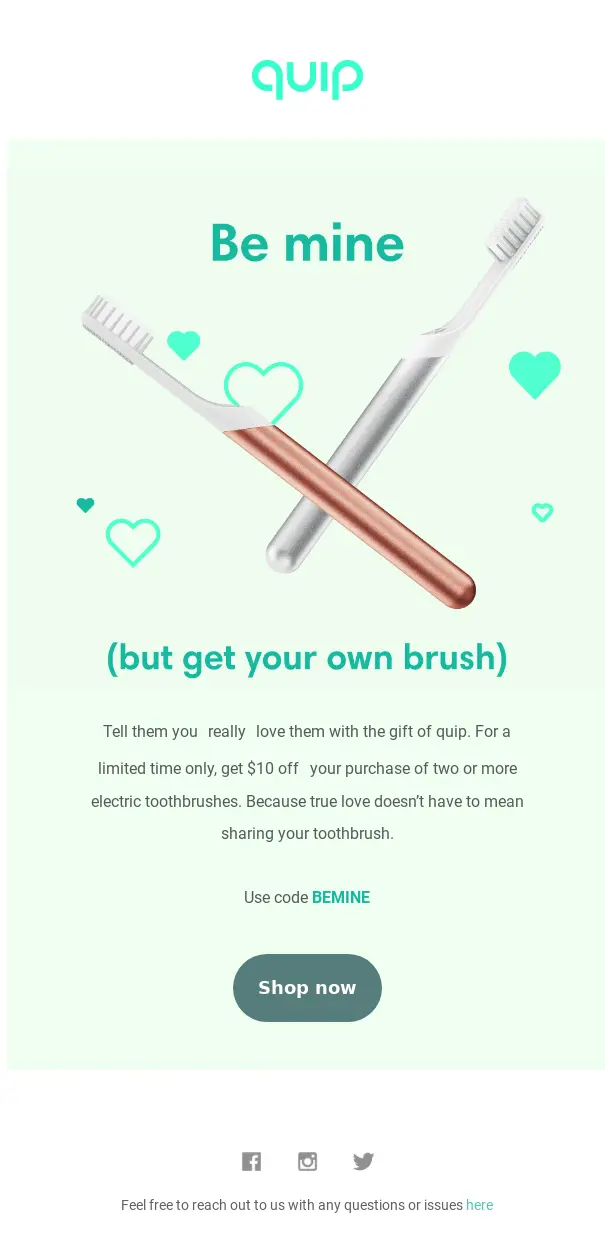
source: Mailcharts
Urban Outfitters used a light-hearted approach in their re-engagement campaign, with a text format like those readers would see on phone messages. They remind them of what a fun brand they are but also give them the option to unsubscribe.
Testing
Not every tactic you use will work. Don’t be afraid to try different strategies on different segments of your inactive subscriber list. Consider the differences among the groups of your subscribers while devising a customized re-engagement email for one of them.
Try offering them a premium update for free for a few months, a discount, etc. In other words, show them that you care and that you miss them.
Do not forget to take the opportunity to analyze the gathered feedback and improve your services. You can also start an email campaign in which you would describe everything that you updated and enhanced thanks to the advice of your thoughtful subscribers!
Final thoughts
Subscriber inactivity is common and how you react to it makes the difference. Try innovative approaches, new content, and developing a set of re-engagement emails to find out whether you can bring people back. Present subscribers with options, such as how often they want to receive emails.
Keep in mind that you might need to adjust your re-engagement messages for different segments of your audience. Offer them to update their email preferences, and do not hesitate to ask them for feedback directly.
For some customers, it may simply be the length or frequency of your emails that are the issue. You may have to experiment a little to find the best way to reach out to your customers and re-engage them.
Yes, re-engagement is definitely not an easy thing to pull. Still, if you try to implement the practices mentioned in this article, reconnecting with your inactive subscribers might get a lot easier!



